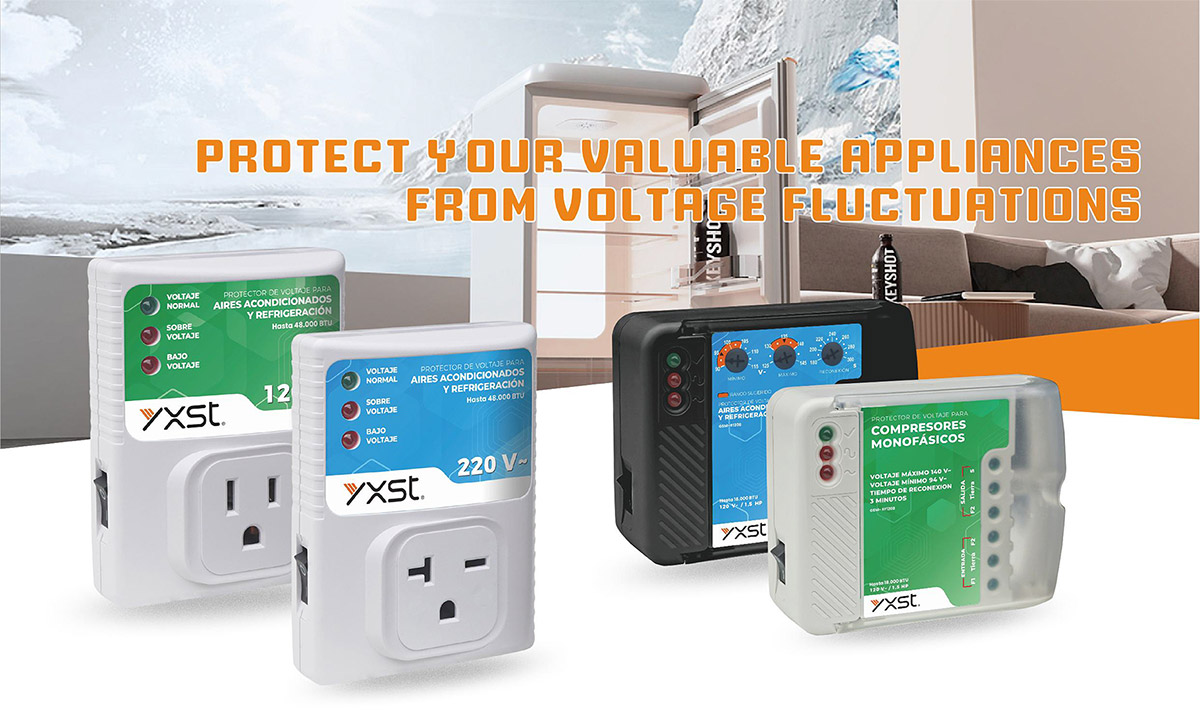The main difference between an overvoltage protector and an automatic voltage protector is their function, working principle, and application scenario.
Automatic voltage protector
Function:
An automatic voltage protector can provide not only overvoltage protection but also undervoltage protection. It can automatically disconnect the circuit when the voltage is abnormal and automatically reconnect the circuit when the voltage returns to normal levels.

Working principle:
An automatic voltage protector usually integrates multiple protection functions and monitors real-time changes in voltage. When the voltage exceeds or falls below the set range, it automatically cuts off the circuit and automatically reconnects it after the voltage returns to normal.
Usage scenario:
Suitable for equipment and systems that require comprehensive voltage protection, especially those that are sensitive to voltage changes, such as household appliances, industrial equipment, generator sets, etc.
Overvoltage protector
Function:
Mainly used to protect electrical equipment from damage caused by excessive voltage. When the voltage exceeds the set value, the overvoltage protector disconnects the circuit to prevent the voltage from continuing to rise, thereby protecting the equipment.
Working principle:
An overvoltage protector usually has a set voltage threshold built in, and when the voltage exceeds this threshold, the protector quickly cuts off the circuit. This threshold is fixed or adjustable to suit the needs of different devices.
Use scenarios:
Commonly used in situations where protection against overvoltage is required, such as power systems, motors, transformers, etc.
An automatic voltage regulator (AVR) is a more widespread voltage control device that automatically adjusts the output voltage according to changes in the grid voltage to maintain a stable output. The automatic voltage regulator can be regarded as an automated voltage control mechanism that aims to ensure that the voltage at the load end remains within a set range regardless of how the grid voltage fluctuates. This device is often used to ensure the stable operation of the power system, especially in environments with large voltage fluctuations, such as remote areas or industrial environments.
An overvoltage protector, also known as an overvoltage protector, is an advanced protective device used to limit lightning overvoltage and operating overvoltage. Its main function is to protect the insulation of electrical equipment such as generators, transformers, vacuum switches, busbars, motors, etc. from overvoltage damage. Overvoltage protectors can limit the operating overvoltage of the power system, as well as the phase-to-phase overvoltage and relative-to-ground overvoltage. Its function is equivalent to that of a lightning arrester, but unlike traditional lightning arresters, overvoltage protectors can be phase-to-phase protection or relative-to-ground protection.
Summary
Overvoltage protectors are designed to protect against overvoltage conditions and usually have only one function.

Automatic voltage protectors provide more comprehensive voltage protection, covering overvoltage and undervoltage protection, and can automatically restore normal operation.
Automatic voltage regulators are a broader system designed to maintain a stable power supply by automatically adjusting the output voltage to ensure that the equipment can work properly under various voltage conditions. The main purpose of an overvoltage protector is to take action when the voltage exceeds a predetermined value, such as disconnecting the power supply or reducing the voltage, to protect the equipment from excessive voltage damage.




